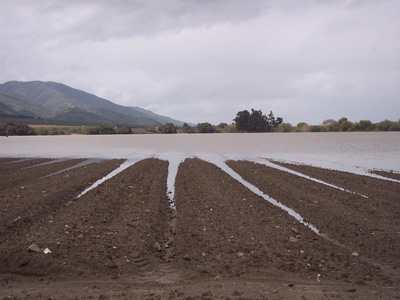News and Stories
Ups and Downs: Mother Nature Rules the Produce Market

One of the best things about working in the produce industry is the ever-changing market—there is always excitement somewhere. If the lettuce market is steady, strawberry, prices are climbing; if the potato market is easing, asparagus prices are skyrocketing. Somewhere, somehow, there is always a market escalating or in a free fall.
Produce is truly one of the last commodity supply-and-demand markets left. If supplies are plentiful, prices are low. If stocks are limited, the market climbs. Even more challenging is that when prices are up, quality is sometimes poor and when the market is near the bottom, quality is usually excellent! The funny part of this scenario is how the average person really struggles with this dynamic. How many times have your friends and family asked you, "How in the heck can the prices for strawberries be so high when the quality is so terrible?"
Why does the produce market move up and down so quickly? First and foremost, Mother Nature has a mind of her own. Growers may have a crop in the ground with the expectation of high yields and great quality, but you never know when a huge storm or an unexpected weather incident may take place, changing all predictions in just a matter of hours. It’s amazing how quickly all forecasts can shift due to abnormally warm or cold weather, strong winds, heavy rain, hail, or the quality problems those conditions cause like bruising, insect infestations, mildew, tip burn, and water damage.
A great example of this is the 2012-2013 apple season. Although the East Coast and the Midwest experienced one of the mildest winters on record, an extremely warm spring in Michigan and New York caused trees to bloom early. Then in March, a cold spell froze blooms and fruit buds, causing widespread damage to the apple blossoms and the young fruit that was already beginning to develop. As a result, crop yields for those regions could fall as much as 75% for the year. This will drive the cost for apples and products made with apples higher than we’ve seen in recent years.
Another significant reason for the volatile market: the human component. Because farmers cannot predict the weather or demand, they may plant too many or too few acres. Growers’ financial health can factor into it as well—if they don’t have enough capital to finance a crop, available supplies will be tighter. Even a 10% increase or decrease in supply availability can cause prices to fluctuate in a dramatic way.
For example, during the winter of 2011-2012, lettuce farmers were still reeling from the previous year’s Sclerotinia sclerotiorum problems. This soil-borne fungus greatly reduced their harvestable lettuce supplies and drove prices up to limits previously never seen. Thinking of the losses and monies made due to the previous winter season shortage, growers in Arizona and Southern California planted every available acre with lettuce…but a mild winter and no major quality problems resulted in an overabundance in stocks, excellent quality, and low prices.
If you think about it, the produce industry is a lot like the stock market—just when you think you have it all figured out, some unpredicted event changes everything.
We hope you enjoy the challenges of produce as much as we do—it’s great fun and always a challenge that we strive to meet.
